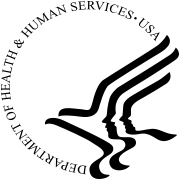National Toxicology Program
The National Toxicology Program (NTP) is an inter-agency program run by the United States Department of Health and Human Services to coordinate, evaluate, and report on toxicology within public agencies.[1]
 | |
| Agency overview | |
|---|---|
| Formed | 1978 |
| Parent agency | United States Department of Health and Human Services, National Institute of Environmental Health Sciences |
| Child agencies |
|
| Website | ntp |
The National Toxicology Program is headquartered at the National Institute of Environmental Health Sciences (NIEHS). The NIEHS Director, currently Dr. Linda Birnbaum, Ph.D., D.A.B.T., A.T.S., also concurrently serves as NTP Director.[1] The Associate Director of the Program is Dr. John R. Bucher, Ph.D.
The NIEHS National Toxicology Program's Office of the Report on Carcinogens, directed by Dr. Ruth Lunn, Dr.P.H., is responsible for publishing the Report On Carcinogens; with the current year 2011 Report included, there have been 12 editions.[2]
History
The program was established in 1978 by Joseph A. Califano, Jr., then the United States Secretary of Health, Education, and Welfare (today known as the Secretary of Health and Human Services). The program arose from congressional concerns about the health effects of chemical agents in the environment. In October 1981, Secretary Richard S. Schwiker granted permanent status to the program.[3]
Interagency Center for Evaluation of Alternative Toxicological Methods
The NTP Interagency Center for the Evaluation of Alternative Toxicological Methods (NICEATM) supports the development and evaluation of new, revised, and alternative methods for chemical safety testing. Alternative methods are methods for safety testing of chemicals and chemical products that use fewer or no animals or that minimize or prevent animal pain and distress. NICEATM is directed by Dr. Warren Casey, PhD, DABT.
The NIH Revitalization Act of 1993 [4] directed NIEHS to establish criteria for the validation and regulatory acceptance of alternative test methods and a process for their subsequent implementation. This led to the establishment of the Interagency Coordinating Committee on the Validation of Alternative Methods via the ICCVAM Authorization Act of 2000,[5] which stated that ICCVAM would exist as a permanent interagency committee of NIEHS under NICEATM.
In addition to supporting ICCVAM, NICEATM activities include:
- Conducting and publishing analyses and evaluations of data from new, revised, and alternative testing approaches
- Providing information to test method developers, regulators, and regulated industry through its website and other communications and by organizing workshops and symposia on topics of interest
- Providing bioinformatics and computational toxicology support to National Toxicology Program and NIEHS projects, especially those related to Tox21
NICEATM publishes results of its analyses of alternative test methods and approaches in the peer-reviewed literature and presents at meetings of the Society of Toxicology and the World Congress on Alternatives and Animal Use in the Life Sciences.
References
- "Office of the National Toxicology Program". NIEHS. December 13, 2010. Archived from the original on 20 December 2010. Retrieved 15 January 2011.
- Report on Carcinogens Archived 2011-06-23 at the Wayback Machine, NIEHS National Toxicology Program
- "History of the NTP - National Toxicology Program". National Toxicology Program. Archived from the original on 16 October 2010. Retrieved 15 January 2011.
- NIH Revitalization Act of 1993 (P.L. 103-43, codified at 42 U.S.C. 285l-1 and 42 U.S.C. 283e)
- ICCVAM Authorization Act of 2000 (P.L. 106-545, codified at 42 U.S.C. 285l-3)
External links
| Wikimedia Commons has media related to PD US HHS NTP. |
- Official website
- NICEATM website
- Tox21 – U.S. Government high-throughput screening initiative
- Ninth World Congress on Alternatives and Animal Use in the Life Sciences – official website
